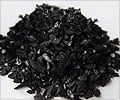A new study by researchers from the Ohio State University has determined that typhoons bury tons of carbon in the oceans.
The study, which is the first ever to examine the chemistry of stream water and sediments that were being washed out to sea while a typhoon was happening at full force, will help scientists develop better models of global climate change.Anne Carey, associate professor of earth sciences at Ohio State, and her team, analyzed water and river sediments from around the world in order to measure how much carbon is pulled from the atmosphere as mountains weather away.
They studied two types of weathering: physical and chemical.
While physical weathering happens when organic matter containing carbon adheres to soil that is washed into the ocean and buried, chemical weathering happens when silicate rock on the mountainside is exposed to carbon dioxide and water, and the rock disintegrates.
The carbon washes out to sea, where it eventually forms calcium carbonate and gets deposited on the ocean floor.
If the carbon gets buried in the ocean, it eventually becomes part of sedimentary rock, and doesn't return to the atmosphere for hundreds of millions of years.
Advertisement
The researchers found that, of the 61 million tons of sediment carried out to sea by the Choshui River during Typhoon Mindulle, some 500,000 tons consisted of particles of carbon created during chemical weathering.
Advertisement
Scientists have long suspected that extreme storms such as hurricanes and typhoons bury a lot of carbon, because they wash away so much sediment. But since the sediment washes out to sea quickly, samples had to be captured during a storm to answer the question definitively.
According to study coauthor and Ohio State doctoral student Steve Goldsmith, "We discovered that if you miss sampling these storms, then you miss truly understanding the sediment and chemical delivery of these rivers."
Source-ANI
SPH










